| Article ID | Journal | Published Year | Pages | File Type |
|---|---|---|---|---|
| 3158174 | Journal of Oral and Maxillofacial Surgery | 2011 | 5 Pages |
PurposeOdontogenic infections present challenging airway scenarios to surgeons and anesthesiologists. Among specialists, there is controversy over airway management for those patients with airways made difficult by trismus and swelling with anatomic impingement and derangement. Awake fiberoptic intubation has achieved favor in the oral and maxillofacial surgery and anesthesiology communities for management of such difficult airways, but patient comfort and anxiety management with traditional agents may prove hazardous because of potential suppression of protective mechanisms and respiratory depression.Patients and MethodsThree cases are presented showing the utility and safety of the use of dexmedetomidine sedation for presurgical airway instrumentation and insertion in patients with challenging airways because of severe cervicofacial odontogenic infections.ResultsDexmedetomidine administration provided safe and effective sedation and anxiolysis for awake fiberoptic airway instrumentation and airway insertion in patients presenting with severe cervicofacial infections with difficult airways because of anatomic obstruction.ConclusionsDexmedetomidine sedation is advocated for use in awake fiberoptic intubation of patients with cervicofacial infections and difficult airways because of its ability to provide sedation, analgesia, reversible anterograde amnesia, and anxiolysis without impairment of protective reflexes, respiratory depression, or hemodynamic compromise. One of the most significant challenges facing oral and maxillofacial surgeons is the difficult airway. Anatomically compromised airways present unique clinically daunting situations to both surgeon and anesthesiologist, who are both charged with the provision of safe, effective preoperative, intraoperative, and postoperative airway management. Among these conditions, odontogenic infections and patients with head and neck trauma, temporomandibular disorders, orofacial tumors, and severe craniofacial anomalies present for surgical treatment by the oral and maxillofacial surgeon.
